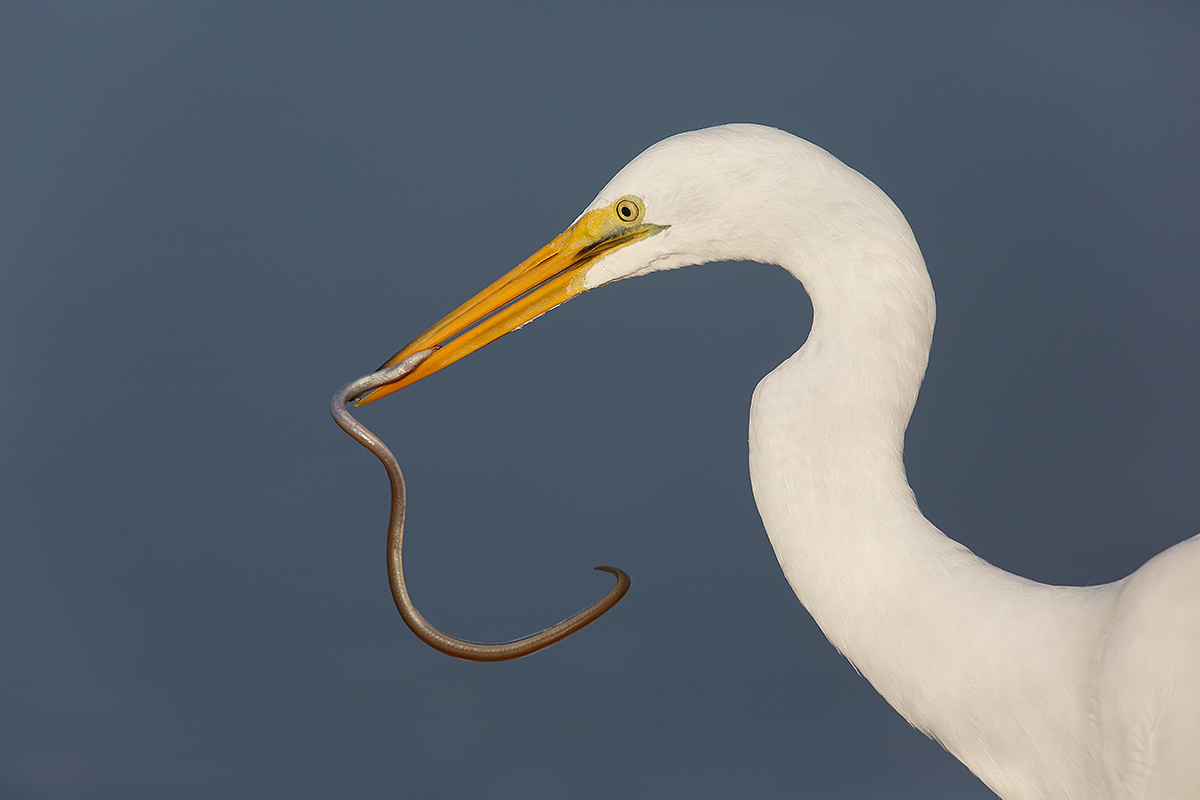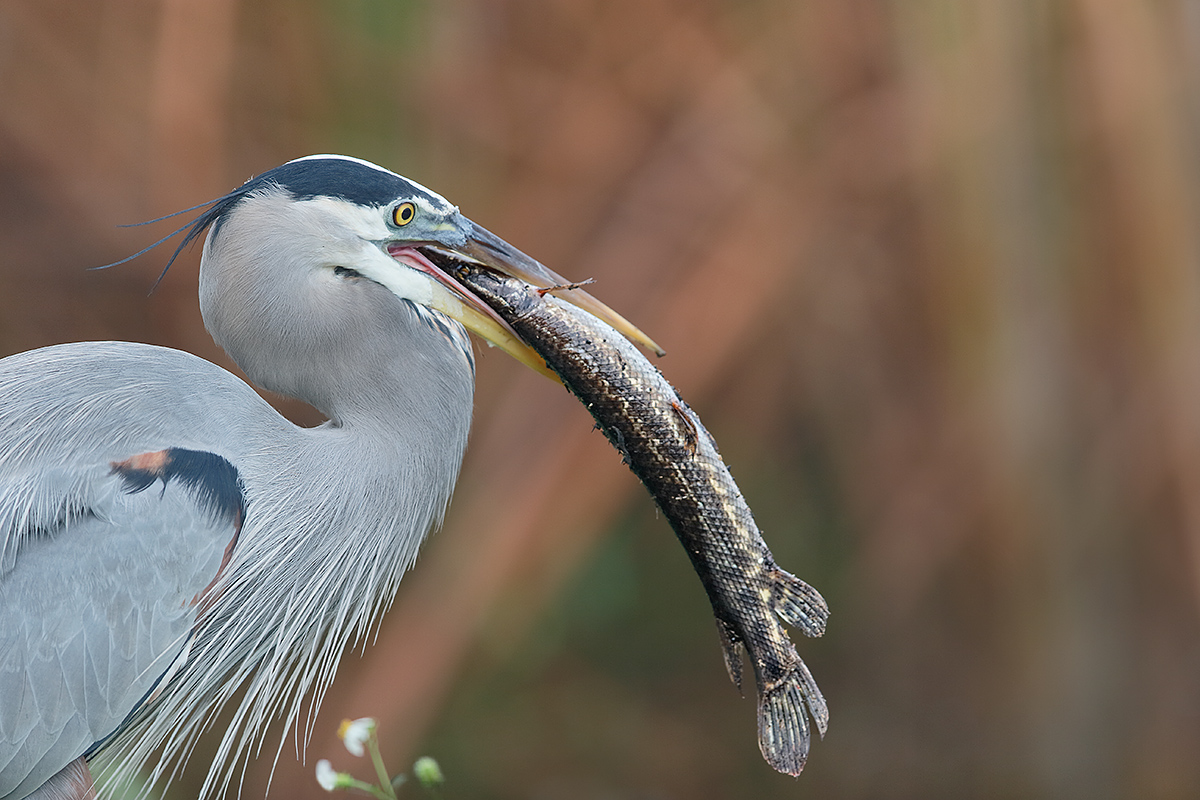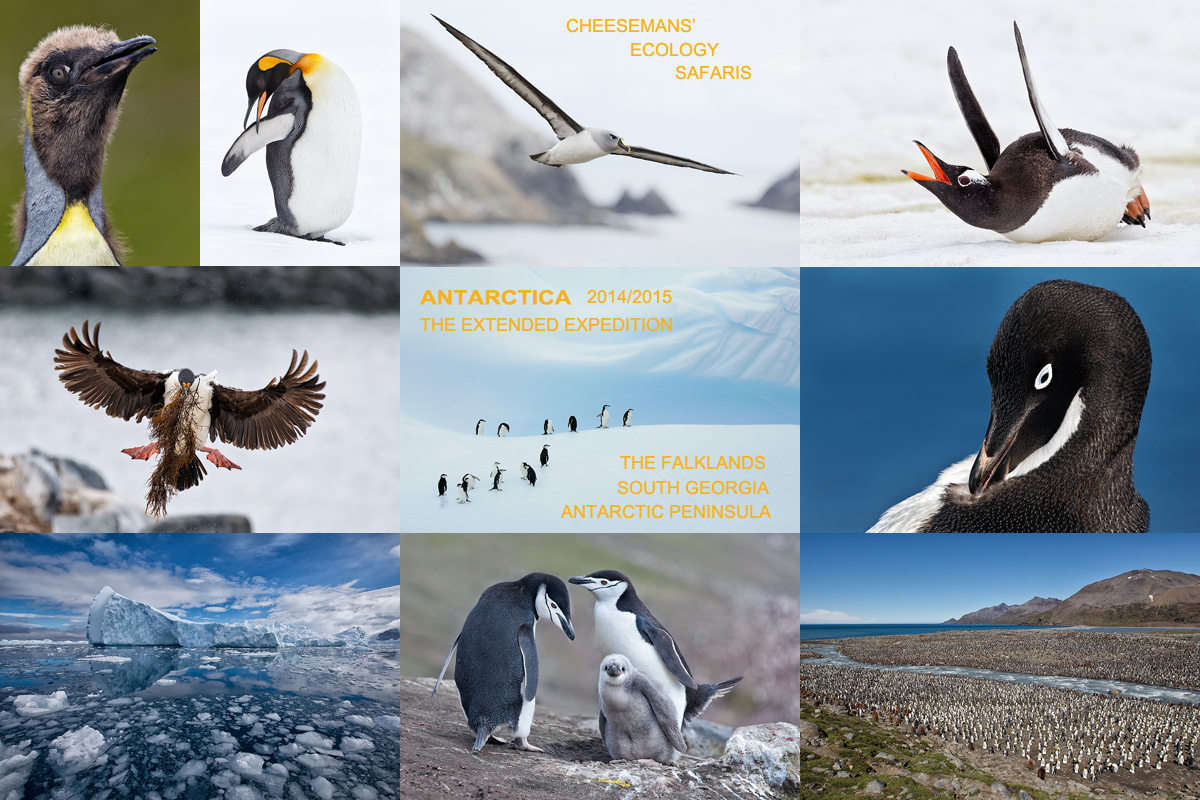And the Streak Continues
This post marks 67 days in a row with a new educational blog post, a record by far that should be extended for at least another week or two. Or not. 🙂 To show your appreciation, we ask that use our B&H and Amazon affiliate links for all of your B&H and Amazon purchases. Please check the availability of all photographic accessories in the BIRDS AS ART Online Store. We sell only what I use and depend on. We will not sell you junk. We know what you need to make creating great images easy and fun. And we are always glad to answer your gear questions via e-mail.
You can find the following items in the store: Gitzo tripods, Mongoose M3.6 and Wimberley heads, plates, low feet, and accessories, flash brackets, , Delkin e-film Pro Compact Flash Cards, LensCoat products, and our unique line-up of educational materials including ABP I & II, Digital Basics, Site and Set-up e-Guides, Canon and Nikon Camera Users and AF e-Guides, and MP-4 Photoshop video tutorials among others.
We would of course appreciate you using our B&H and Amazon affiliate links for all of your B&H and Amazon major gear, video, electronic, household, and personal purchases. For the photographic stuff mentioned in the paragraph above we would of course greatly appreciate your business.
Thanks and enjoy today’s blog post! This one took about 2 hours to assemble. I am feeling pretty close to normal today.

|
|
This Great Egret with a very strange prey item was photographed on the Little Estero Lagoon IPT with the Gitzo 3532 LS carbon fiber tripod, Mongoose M3.6 head, the 61-point/AI Servo/Rear Focus as framed active at the moment of exposure. Click here if you missed the Rear Focus Tutorial. Click on the image to see a larger version.
|
Can the Wrong Head Head Angle Be the Right Prey Angle?
In both of the images here the head of the wading bird is turned away from the viewer; the head angle would usually be thought of as poor.
The image above shows a Great Egret with what I believe to be some type of fish. I saw the capture and it was as strange as the creature itself. Half of the long, skinny prey item was sticking straight up out of the mud. It looked like a stick. Then the bird grabbed it, pulled it out of its hole, and worked at swallowing it for about a minute or so.
Had the bird turned its head more towards us in the image above, how would that have effected the rest of the image? Please be specific.
If anyone has an idea as to the true identity of the prey item, please let us know by leaving a comment.

|
|
This Great Blue Heron with a gar was photographed this morning on the Anhinga Trail IPT with the Gitzo 3532 LS carbon fiber tripod, Mongoose M3.6 head, the 61-point/AI Servo/Rear Focus as framed active at the moment of exposure. Click here if you missed the Rear Focus Tutorial. Click on the image to see a larger version. |
The Gar
Here, nobody in the group saw the capture. The gar was lying on the ground on the asphalt path at Anhinga Trail. Two great blues were disputing ownership with their beautiful wings drooped threat displays. In the meantime a Black Vulture tried to steal the fish without success. The gar flopped itself on the grass above Taylor Slough and finally the dominant GBH was able to pick it up. As I framed the image I was aware that the bird’s head was turned away slightly but I was so excited that I made three images and in retrospect am glad that I did. Then the bird turned slightly towards me so that the head was square to the camera. Inexplicably I waited just a moment for perfect to become more perfect and the bird took flight landing on the other side of the slough…. Please do not think that after 30+ years of doing this that I fail to get excited in instances like this.
In any case, had I pressed the shutter when the head angle was perfect for the bird how would that have effected the image as a whole?
Your Favorite?
Please let us know which of the two images (if either) you like best. And of course, let us know why.

|
|
Breathe deeply, bite the bullet, and live life to its fullest; we all get only one ride on the merry-go-round… Join me on this great trip. Click on the image to enjoy a larger version. |
The Southern Ocean…
I’ve been blessed. I’ve made three trips to the Southern Ocean, two extended trips that visited the Falklands, South Georgia, and the Antarctic Peninsula, and one to the Falklands and South Georgia. Each was a truly amazing experience. With three trips under my belt, I have a pretty good idea about how to make great images at each of the iconic landings. And I would love the chance to share my knowledge with you.
And I know from personal experience that if you are a photographer who is going to invest in Southern Ocean voyage that you will want to put your money on Cheesemans’. No other tour company goes so far out of their way to ensure making every possible safe landing. And no other tour company will have you spending more time on land. Here, from the” Way to Go CES! (Cheeseman’s Ecology Safaris)” blog post here, is one of my favorite Cheesemans’ stories:
The landing at Bailey Head, Antarctica, was especially rewarding to me as I had been sitting in a zodiac 100 yards off shore on my 2007 trip when the zodiac in front of mine swamped and the captain of the ship called off the landing…. Early that day it looked as if my weather Karma might not be working. Ted’s “Good morning shipmates” was followed by the news that we would not be able to land at Bailey Head that morning as the swell was too big. The beach there is sloped tremendously and the sea strives to pull the zodiacs back into the ocean before folks have gotten off with their gear. Tom Murphy had said to me several days before, “We will get you on the beach at Bailey Head.” Ted concluded his morning greetings by saying, “We are sending out a scout team to see if landing is possible.”
After breakfast I was thrilled to hear Ted’s voice again on the PA, “We will be landing at 8am.” Afterwards folks noted that it was the calmest landing ever at this amazingly beautiful spot. My good weather Karma (courtesy of late-wife Elaine) had come through one last time. Along with St. Andrews Bay, it was one of my two favorite super-great once-in-a-lifetime days of the trip. And we even got to enjoy three additional hours at Hannah Point, Antarctica before calling it a wrap and heading for the feared Drake Passage. All thanks to Cheesemans’ Ecology Safaris.
Why Sign Up Through BIRDS AS ART?
If you have been thinking and dreaming of finally visiting South Georgia and Antarctica, this is the trip for you. Quit dreaming and act now. Though I will not be an official leader on this trip, those who have traveled with me know that I cannot help but teach. I will make pre-trip gear recommendations. I will hold informal pre-landing briefings. In the same vein, everyone will receive a free copy of our Antarctica Site Guide once they are paid in full (August 15, 2014). I will be available on the ship to review your images,, answer questions, and conduct informal over-the shoulder Photoshop sessions. And best of all everyone who signs up under the auspices of BAA are invited to tag along with me on the landings where I will be glad to offer invaluable in-the-field advice. And the same goes for the ship-board birds in flight and marine mammal photography opportunities.
Do join us. To learn how to be part of the BAA group please e-mail me with the words Antarctica/Extended Expedition BAA Info Please cut and pasted into the Subject line.
The Cheesemans’ Ecology Safaris Antarctica/The Extended Expedition Voyage
Antarctic Peninsula, South Georgia and Falkland Islands: December 13, 2014 to January 10, 2015
From the CES website:
Join us on a voyage of discovery to an awe-inspiring world devoted to nature, wildlife, science, and peace. This expedition will have you completely captivated, from the stunning vistas of Tierra del Fuego to the busy penguin rookeries of the Falklands, from the dramatic landscapes of South Georgia to the ice-covered terrain of the Antarctic. Board the comfortable, safe and newly upgraded Ortelius for an expedition offering an unparalleled 17 landing days in the Southern Ocean. Our voyage includes three days in the Falklands with a huge diversity of species, six days at South Georgia Island, the all but undiscovered rugged land of towering mountains and thriving colonies of penguins, seals, and albatross, one day at the South Orkneys with nesting Snow Petrels, and seven days along the Antarctic Peninsula, the wonderland of ice and inconceivably vibrant polar wildlife. During days at sea, our naturalists on the ship’s bridge and stern share sightings of whales and seabirds, including many of the world’s species of albatross. Maximum time both on shore and Zodiac cruising will be available for photography, wildlife experiences, and exploring the landscapes of the great Southern Ocean. Our priority is assuring the most in-depth wildlife experience in the Antarctic, an experience made possible by our excellent itinerary and committed expedition staff.
I can personally attest to the accuracy of everything above. 🙂
Additional Links
Learn about the global ocean here.
Antarctic Inspiration from Paul Mckenzie here.
Way to Go CES! (Cheeseman’s Ecology Safaris) here.
Or simply type any of the following words or phrases in the little white search box on the top right of this page, hit Search, and follow the links: penguin; Antarctica; South Georgia; Falklands. Have fun.
The Pull is Too Strong…
The pull is too strong. I need to go back. And I am. Do join me for an unparalleled wildlife and scenic photography experience. Please e-mail for additional information.
Questions?
I’d be glad to answer all of your Southern Ocean/Falklands/South Georgia/Antarctica questions. Please leave a comment if you’d like to learn more.
Support the BAA Blog. Support the BAA Bulletins: Shop B&H here!
We want and need to keep providing you with the latest free information, photography and Photoshop lessons, and all manner of related information. Show your appreciation by making your purchases immediately after clicking on any of our B&H or Amazon Affiliate links in this blog post. Remember, B&H ain’t just photography!




Amazon
Everyone buys something from Amazon, be it a big lens or deodorant. Support the blog by starting your search by clicking on the logo-link below. No purchase is too small to be appreciated; they all add up. Why make it a habit? Because I make it a habit of bringing you new images and information on an almost daily basis.
Typos
In all blog posts and Bulletins, feel free to e-mail or to leave a comment regarding any typos, wrong words, misspellings, omissions, or grammatical errors. Just be right. 🙂
IPT Info
Many of our great trips are filling up. See especially info on the South Florida, Holland, and Nickerson Beach IPTs. Two great leaders on most trips ensure that you will receive individual attention, have all of your questions answered, and learn a ton including how to think like a pro, see the situation, and get the right exposure every time. In addition you will have fun, and make lots of great images. Click here for IPT details and general information.
















Hasn’t all this gone more than a bit off topic?
Surely it’s the composition that matters, not the precise genus and species of the unfortunate creature being eaten?
The blog is about learning in all areas. I am the one who asked about the identity of the prey item; surely I am allowed to do that on my own blog :)…. artie
I’m pretty sure the egret has a common eel in his beak.I have salt water mmarsh in my back yard and often see egrets feeding on eels. I have a Great Heron who hangs out in the marsh. He will eat much larger eels. Once he gets the eel in his beak he shakes head vigorously. I think what he is doing is breaking the eels spine before eating.
The First prey item looks like a young Ophisaurus Ventralis.
I wish I had taken some pics of the ones I came across them in the field in Fl. But Here is one- http://www.flickr.com/photos/nclarkii/3948043880/
This doesn’t make sense to me; glass lizards aren’t aquatic although they like damp places. Also, they don’t look like the animal that Artie’s heron has caught. Swamp eels are Asian, first reported in FL in 1997 and spreading quite widely. They look like Artie’s heron’s catch. Read Artie’s description of where the animal was and the heron’s capture. The prey seems clearly to be an aquatic, not a terrestrial, animal. Great image, Artie!!
I too am for getting the best of both worlds. If you have a choice, chance and time to get one yes, by all means keep shooting till you get one. But like all good things in life (lol), we generally dont get the action for a long time and on your terms.
So a compromised bird HA for a better look at the the prey and even better, a piece of the capture/struggle action.
Artie your First prey is a glass lizards or glass snakes, (genus, Ophisaurus) Also known as Legless Lizards. Commonly found around Water bodies in Fl. I am not sure about the species but the genus definitely is Ophisaurus.
Check This out- http://a-z-animals.com/animals/glass-lizard/
Great shots. I think the Egret looks like it has an Elver. The Great Egrets and White Faced Herons are also eating these a lot at the moment in the Tamar River, Tasmania, Australia but I have not seen them do this before this year.
Ah, that sounds good to me. An elver is a baby eel, right? Do you know if they burrow down into sand or mud???
Yes it is and I think they do burrow in the sand as the birds here look like they are tugging at them to get them out of the water.
Thanks Phillipa. Elvers sounds like a winner! artie
Definitely not an elver. Elvers wouldn’t be there and they don’t look like that anyway. I agree with Andrew, it looks like a swamp eel, but I need to check if they would be there. Wonderful shot, and the bird’s head angle is fine in the whole image.
Art, prey over head angle. Get the action. My first guess is a pipefish, actually closely related to sea horses.
Marr
Thanks Marr. Definitely not a pipefish, at least not the type I am familiar with. artie
I’m digging the Egret….I love the color of white on flying creatures.
Did you have the flu??
I am pretty sure that I just had a nasty head cold. artie
I’m all for getting fine details right, but when you have a great action or behavioral shot a slight change in the angle of the head isn’t that crucial to me. Of course we would all like perfect photos, but you were smart to not wait for the perfect photo. The Heron trying to swallow that huge fish is just plain impressive. Unless his head was really turned away, I have no problem with this image. I actually prefer an image like this to a perfectly posed bird sitting statically on a branch with its head at the perfect angle. Love both images.
IMHO exactly right.
When an image is good, a degree or two of head angle makes no difference or at least not enough to matter.
It’s like arguing endlessly over whether one lens at F8 is microscopically sharper at the extreme edge of the frame than another.
Who cares?
Does it matter?
Such people spend their time arguing about minutiae rather than getting some photos taken and as Art found, if you delay too long in the search for perfection, you may well end up with a perfect blank frame!
For the Egret I don’t see that there is any way of telling – unless of course you can predict in which direction the eel would wriggle next.
For the heron, if the focus point is on the head, then both the head and the gar will stay in focus unless of course the head rotation is considerable in which case the gar ‘s lower body may drift out of focus – quite likely at F4.
For the Egret, if the head angle was more toward us, the snake/eel
would’ve been flipping away, probably not allowing us to see the
nice clean curves of the snake/eel.
For the GBH, it would’ve been the opposite of the Egret, this time
the Gar would be more in our face, maybe even losing the eye of the Gar.
I’m also wondering if you would’ve need some extra DOF on the GBH since
the Gar would’nt have been so parallel to the camera…the Egret, you’d
probably ok.
Doug
Hi Arthur, both are very cool captures…could the Egret have a Swamp Eel? With prey captures like these I think it is more about the prey than the head angle. My fave is Great Blue Heron mostly for the size of the gar in relation to the heron. Lovely 🙂